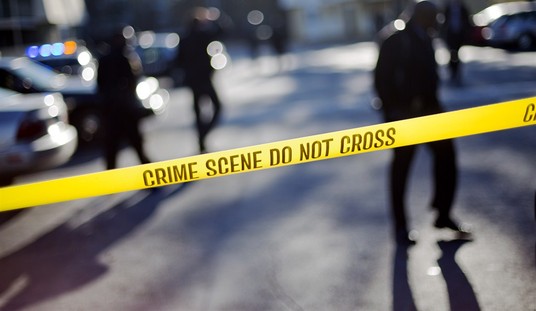Sixty-two years after the United States dropped atomic bombs on Hiroshima and Nagasaki, Japan has yet to embrace thankfulness for that blessed event, that allowed so many untold millions to live. By continue to insist on Japanese victimhood, Japan and the world have yet to properly honor the martyrs of Hiroshima and Nagasaki.
It remains one of the most misunderstood events of modern history. The retrospectives you hear around this anniversary period are going to focus heavily on the undeniable suffering of Japanese civilians, 214,000 of whom were killed on Aug. 6 and Aug. 9, 1945, precipitating the sudden about-face and unconditional surrender of the previously suicidally intransigent Japanese high command. The reports you hear, out of a sense of fairness, may touch briefly on those who didn’t die: the estimates of hundres of thousands of American soldiers not killed in the invasion that never happened.
That number is academic, rarely deemed of much importance in historic presentations, a footnote to the reality of more than 200,000 people incinerated, stripped of their flesh, poisoned by radiation.
But, in the wake of the recent forced resignation of Japan’s defense minister, let’s consider what that suffering bought. Because war, by its nature, forces the brutal calculation of loss to gain, unless you are one of those who believes war can be wished away. The Pacific war was certainly not a war of that variety.
We’ll start with what the ousted Japanese defense minister, Fumio Kyuma, a native of Nagasaki, said in his speech in late June:
The atomic bombing of Nagasaki and Hiroshima “couldn’t be helped” and was “inevitable.” Kyuma noted the bombings had the desirable effect of precluding a Soviet invasion of northern Japan, and the prospect that millions of Japanese might have suffered the kind of decades-long Soviet nightmare suffered by Germany, Eastern Europe and Korea. Perhaps, as in the case of Korea, a division enduring to this day. Undoubtedly, as in the case of Germany and eastern Europe, ongoing social and economic trauma.
Let’s consider the hypothetical American dead. Some estimates run as high as 800,000, twice the number of America’s World War II dead by the time it was over a few days later. More conservative estimates run as low as about 200,000 … roughly the number of Japanese killed in Hiroshima and Nagasaki, a neat one-for-one calculation.
Estimates of Japanese civilian and military dead if the United States were forced to invade run from 1 million to 10 million. Those estimates are based on what happened at places like Iwo Jima and Okinawa. Readers will recall that at Iwo, as on some other islands, Japanese soldiers fought virtually to the last man, taking out as many Americans with them as they could. You may have seen the haunting color footage — no safe historic black-and-white distance in these images — kimono-clad Japanese women on Okinawa throwing their babies off cliffs and jumping themselves.
It is important in any understanding of what happened at Hiroshima and Nagasaki to reflect on the fact that Japan started this war, long before it began in Europe. Japan invaded Manchuria in 1931, and followed that with an invasion of China proper in 1937. Headline events include the Rape of Nanking, estimated purposeful, one-on-one murders of civilians by Japanese soldiers roughly placed between 150,000 and 300,000.
There was the Pearl Harbor surprise attack and onslaught through Southeast Asia in 1941. Death marches from the Philippines to Malaya, and the slow murder of tens of thousands of Allied soldiers and hundreds of thousands of native slaves in forced labor camps.
Some people call it racist, Harry S. Truman’s decision to drop the bombs on Japan. Scholarly books have been devoted to this. It’s absurd, of course. The bombs weren’t ready in time for the Nazis. And you may want to ask millions upon millions of Germans whether they might have gladly swapped a couple hundred thousand others to keep the Russians at bay. A chance to claim victimhood with a straight face. They won’t answer you honestly, and its all hypothetical at this point.
An estimated 25 million people were non-hypothetically shot to death, burned to death, bombed to death, beaten to death, beheaded and starved to death as a result of Japan’s war. They were dying at a rate of 200,000 a month. The Japanese Imperial Army intended to murder more than 100,000 Allied prisoners of war as the Allies closed in, and in some cases, brought those plans to bear. If you are Japanese, Chinese, Vietnamese, Thai, Burmese, Malaysian, Indonesian, British, Australian, Dutch or American, you may know men and women or the children and grandchildren of men and women who are alive because of the shock that foreclosed all that murder.
One day in August, 62 years ago, another sun rose in the sky, and all of it stopped. Came to an abrupt halt. All of the murder for which the Japanese people should hang their heads in shame. For which they should herald Fumio Kyuma as a visionary leading them out of a wilderness of shameful denial rather than driving him out in anger.
Finally, a word for the victims of Hiroshima and Nagasaki. They receive a lot of sympathy in current views of those incidents, and rightly so, if not always within an appropriate perspective. What happened to them, like much of what happens in war, was a tragedy. A Japanese tragedy, caused in whole by Japan, brought upon them by their leadership. But there is nothing fair or just about what happened to them, the blood price they paid for their nation’s sins. Today, they are just martyrs who should be honored, for the unwilling sacrifice they made that saved so many millions of lives.
Jules Crittenden blogs at Forward Movement.









Join the conversation as a VIP Member